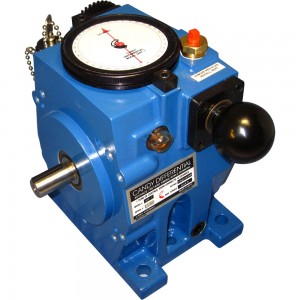The Mechanical Solution to Improve Machine Productivity
Retrofitting with precision differentials improves performance of web converting equipment
The manufacturing industry has seen dramatic change in the last decade: An evolution toward automation has expanded the requirements placed on manufacturing equipment and the need for machines to be more productive. This need for greater productivity has generated demand for manufacturing machinery that is precise, faster, and more flexible in set-up and operation.
This trend is particularly true in the web printing and converting industries. The market for printed materials has changed dramatically as a result of technology and the internet; in order to survive, printing and converting companies have been forced to evolve and adapt to rapidly changing markets. Efforts to print or convert new materials, to accommodate different product sizes, and to improve product quality have placed greater demand on production equipment than ever before.
Machine builders have responded by incorporating greater technology into their designs. Today’s newest web printing and converting equipment can be found stocked full of electronics and servo motors that independently drive and time each print deck or die cutting station for ultimate flexibility, speed, and precision. These machines are truly impressive in design and capability, and so, too, are their price tags. Many manufacturing companies cannot afford seven-figure production lines. For these companies there is another solution, a simpler, mechanical solution in the form of precision differential gearboxes.
 Differential gearboxes are three-shaft (input, output, and control shaft) phase-shifting transmissions that provide infinite, bi-directional position control. Differentials, in most cases, can be easily incorporated into new and existing machines to provide precise print-to-print and cut-to-print registration control, as well as web tension and draw control. Precision differential gearboxes, via the control shaft, can be manually controlled, or, by using a small motor, differential gearboxes can be motorized for open or closed loop control. The ratio between the control shaft and the output not only provides correction resolution, but also reduces the amount of torque required to operate the control shaft, thus minimizing the torque and required size of the control motor. In addition to control shaft ratios that are conducive to printing and die-cutting applications, precision differential gearboxes are accurate, in terms of backlash and transmission error, to meet the demands of the printing and converting industries. Backlash on many of these differentials is measured in arc minutes.
Differential gearboxes are three-shaft (input, output, and control shaft) phase-shifting transmissions that provide infinite, bi-directional position control. Differentials, in most cases, can be easily incorporated into new and existing machines to provide precise print-to-print and cut-to-print registration control, as well as web tension and draw control. Precision differential gearboxes, via the control shaft, can be manually controlled, or, by using a small motor, differential gearboxes can be motorized for open or closed loop control. The ratio between the control shaft and the output not only provides correction resolution, but also reduces the amount of torque required to operate the control shaft, thus minimizing the torque and required size of the control motor. In addition to control shaft ratios that are conducive to printing and die-cutting applications, precision differential gearboxes are accurate, in terms of backlash and transmission error, to meet the demands of the printing and converting industries. Backlash on many of these differentials is measured in arc minutes.
Differentials gearboxes can be foot-mounted, like a standard reducer, or shaft-mounted, depending on the machine design. Differentials offer enough flexibility in configuration to fit most any machine design without significant modification. Due to simplicity in application, differentials are often the best solution for machine builders looking for precise, low-cost running register control for web printing and die-cutting operations. Differentials are also a viable solution for the retrofit of existing machines to improve flexibility and productivity. When incorporated into new and existing machines, differentials have a proven track record of increasing machine productivity via:
- Infinite, bi-directional registration control
- Economical print-to-print and cut-to-print register control
- Improved process timing and accuracy
- Reduced set-up time and product waste
- Enhanced machine flexibility and product range
If you require greater process accuracy from your equipment, if you need to run more jobs, with different product sizes on the same machine, or if you need to reduce set-up time and product waste, then you might consider a precision differential gearbox to increase the productivity of your next machine design or retrofit project.
Visit www.candycontrols.com again soon for a follow-up article that examines the specifics of incorporating precision differential gearboxes into web printing and converting machines to provide running register for printing and die-cutting stations.
 Candy Controls
Candy Controls